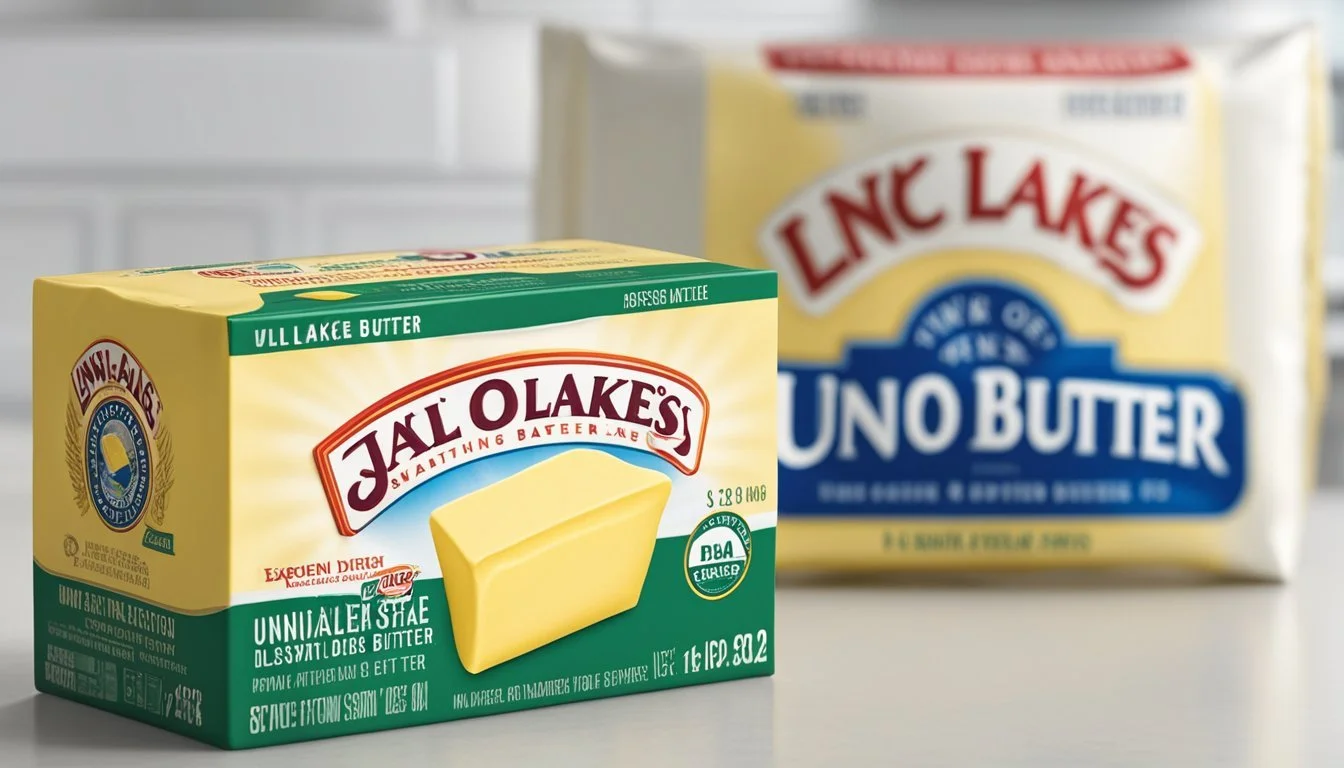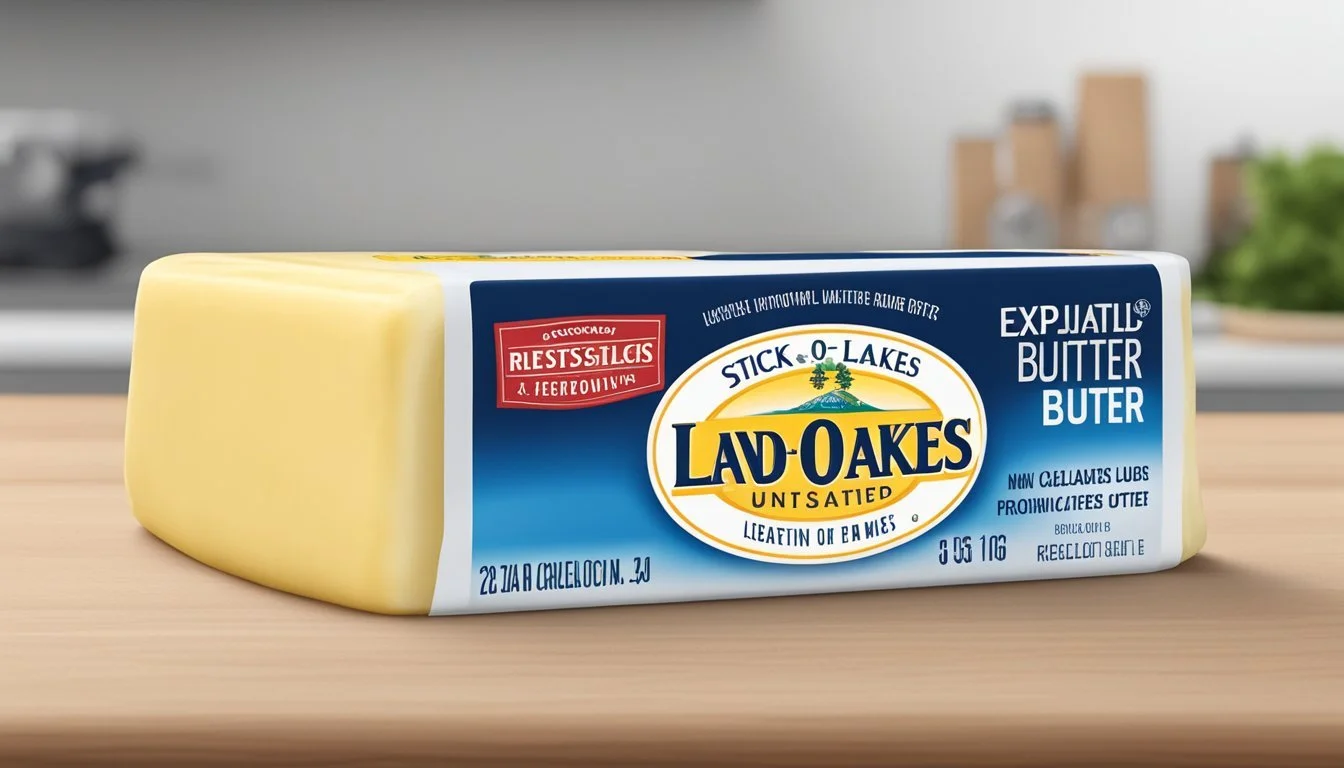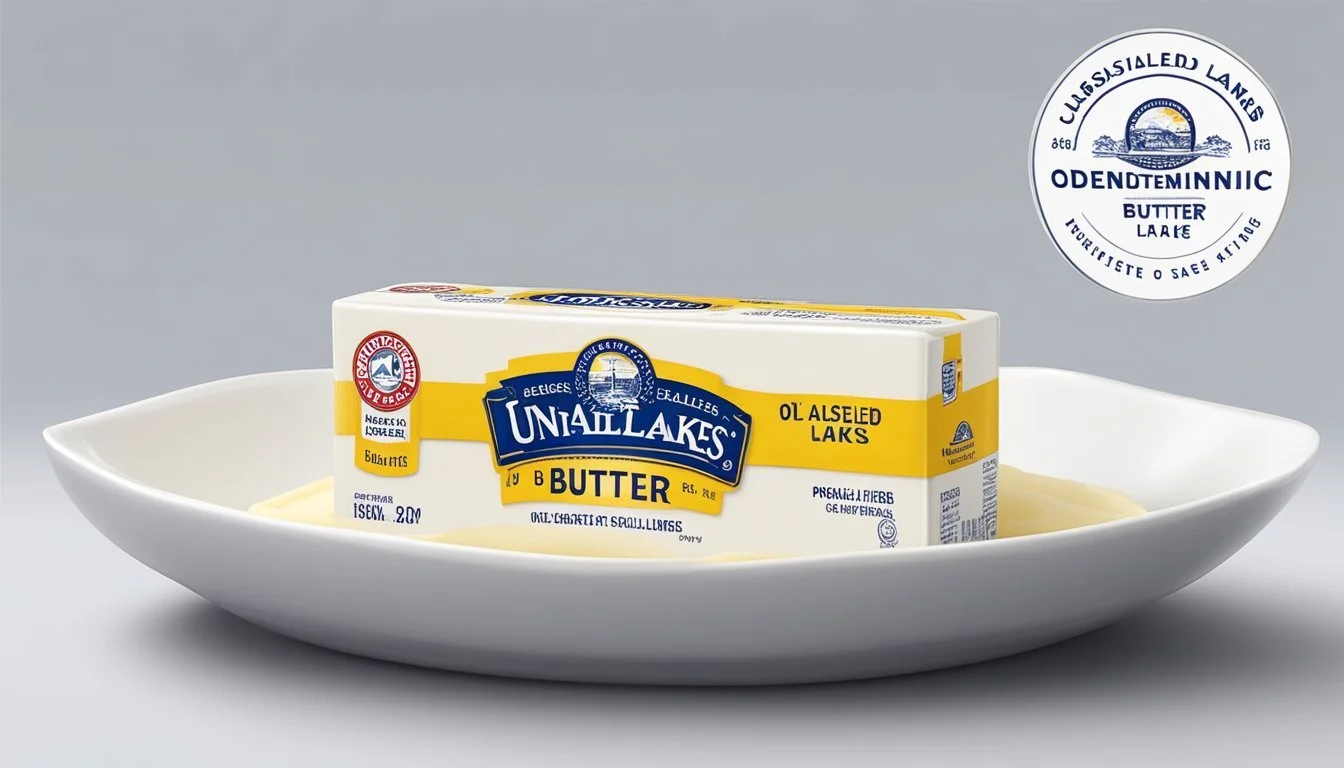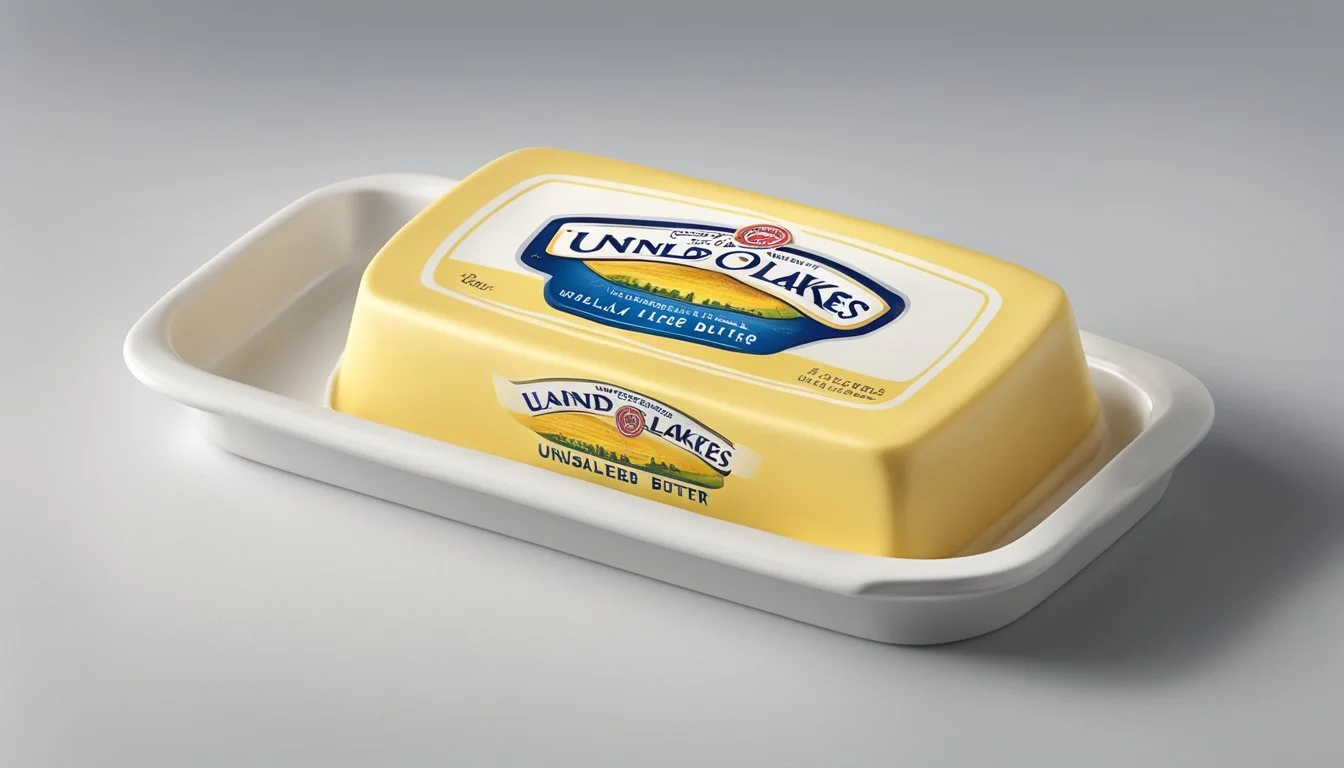How Long Does Land O'Lakes Unsalted Butter Last?
Shelf Life and Storage Tips
Unsalted butter made by Land O'Lakes is a staple dairy product in many households, appreciated for its purity and versatility in cooking and baking. While it lacks the preservative effects of salt, proper storage is key to maintaining its quality and extending its shelf life. When kept in the refrigerator, Land O'Lakes unsalted butter can typically last beyond the best-by date, usually up to two to four weeks when stored correctly.
The quality of unsalted butter can be influenced by exposure to light, heat, and air; thus, it is recommended to store it in its original packaging or in an airtight container to shield it from external contaminants. If a longer shelf life is needed, freezing is an excellent option. Unsalted butter can be frozen for six to twelve months without significant loss of flavor or texture.
It's important to recognize the signs of spoilage in dairy products to ensure safety and optimal taste. Butter that has gone bad may exhibit changes in color, texture, and scent. If any off odors, mold, or discoloration are noticed, the product should be discarded. By adhering to proper storage guidelines, consumers can enjoy the full potential of Land O'Lakes unsalted butter in their culinary endeavors.
Understanding Butter
Butter is a dairy product that's traditionally made from churning cream (how long does cream last?) or milk to separate the fats from the buttermilk. It adds rich flavor to dishes and is an essential ingredient in many culinary traditions.
Composition and Types
Butter consists mainly of milk fat, water, and milk solids. Typically, it contains at least 80% milk fat, with the remainder being water and nonfatty milk components, such as proteins and carbs. There are two primary types of butter: salted and unsalted.
Salted Butter:
Contains added salt, which enhances flavor.
Offers a slightly longer shelf life due to salt's preservative properties.
Unsalted Butter:
Also known as "sweet" butter.
Preferred for its pure, sweet cream flavor and flexibility in cooking.
The Role of Salt in Butter
Salt acts as a preservative in butter and influences its flavor profile and shelf life.
Preservation:
Salt in butter inhibits bacterial growth, extending the product's lifespan.
Salted butter can generally last longer than unsalted butter before spoiling.
Flavor:
Salt enhances butter's taste and can complement other flavors in cooking.
Unsalted butter provides a pure, creamy flavor, allowing for precise seasoning in recipes.
Storage Guidelines
Careful storage of Land O'Lakes unsalted butter maintains its quality and extends its shelf life. Proper methods vary based on the duration and intent of storage, impacting both freshness and spreadability.
Refrigeration Best Practices
To preserve Land O'Lakes unsalted butter's quality, it should be stored in the refrigerator, ideally at temperatures between 32°F and 38°F. Keeping the butter in its original packaging until use protects its flavor. Once opened, it's advisable to wrap the butter or keep it in a butter dish to prevent absorbing odors. For best results, butter should be stored away from foods with strong odors.
Wrap: Once opened, rewrap in the original wrapper or use aluminum foil or waxed paper.
Container: Store in a covered butter dish or a resealable plastic bag.
Freezing and Thawing Butter
Freezing is the perfect option for extending the shelf life of Land O'Lakes unsalted butter beyond refrigeration limits. Freeze butter in its original packaging or airtight containers. Frozen butter can last for several months without losing quality. When thawing, place the frozen butter in the refrigerator to slowly thaw.
Freeze: Store in original packaging or airtight container.
Thaw: Transfer to the refrigerator for gradual thawing. Avoid thawing at room temperature to prevent spoilage.
Room Temperature Storage
While refrigeration is recommended for long-term storage, Land O'Lakes unsalted butter can be left out at room temperature to soften, facilitating easier spreading. However, do not leave butter out for more than 4 hours. Extended room temperature exposure can compromise the butter's freshness and taste.
Softening: Remove butter from the fridge 30-60 minutes before use.
Butter Keeper/Crock: If preferred for short-term use, store the butter in a designated butter keeper or crock.
Maintaining optimal storage conditions for Land O'Lakes unsalted butter ensures its freshness, taste, and spreadability are well preserved for both immediate use and future enjoyment.
Assessing Butter Quality
When it comes to Land O'Lakes unsalted butter, understanding its freshness and safety is important. Two main aspects to consider are the visible signs of spoilage and the indicated expiration or use-by dates on packaging.
Signs of Spoilage
Discoloration: Fresh butter has a uniform, creamy color. Any signs of yellowing or graying may indicate spoilage.
Odor: Fresh butter should have a clean, milky smell. A sour or rancid odor suggests the butter is past its prime.
Mold: Any mold growth on the surface is a clear indicator that the butter has deteriorated.
Texture: Butter that is excessively soft or has a greasy texture can be a sign of rancidity.
Expiration and Use-by Dates
Use-by Date: This date, provided by the manufacturer, informs consumers when the product is expected to be at its peak quality. Land O'Lakes unsalted butter typically has a use-by date on its packaging.
Expiration Date: This date marks when the product may no longer be safe to consume. Unsalted butter generally has a shorter shelf life compared to salted ones, with an estimated 30 days less of freshness.
It is advisable to adhere to these dates to ensure the butter's best quality and flavor. If stored properly in a refrigerator, Land O'Lakes unsalted butter maintains its quality up to the use-by or expiration date. Once opened, the butter should continue being stored in the refrigerator and used within a reasonable timeframe to avoid deterioration in quality.
Usage Tips for Unsalted Butter
Unsalted butter plays a pivotal role in baking and cooking, offering cooks control over the flavor and sodium content of their dishes. It also requires specific handling to maintain its quality and texture for spreading and culinary use.
Culinary Applications
Unsalted butter is a staple ingredient in recipes that call for a precise flavor balance. Its absence of salt allows chefs and bakers to add seasoning to their preference, ensuring the dish's delicate flavor profile is maintained. In baking, unsalted butter contributes to the tender crumb of pastries and the light, flaky texture of pie crusts.
For Cooking and Baking:
Baking: Cakes, cookies, and pastries
Cooking: Sauces, sautéing vegetables, and searing meats
Softening and Spreading
To soften butter for spreading or baking, it should be left out at room temperature for 30-60 minutes but not exceeding four hours. Land O'Lakes recommends storage of their unsalted butter in the refrigerator once opened and not in use.
Softening Butter: Remove unsalted butter from the fridge one hour before use.
For Spreading: Use Land O Lakes® Butter with Canola Oil or a mixture with olive oil for immediate spreadability.
Alternatives to Unsalted Butter
When unsalted butter is unavailable, one can turn to alternatives that may fit the recipe or dietary preferences. These include using Land O Lakes® Butter with Canola Oil or olive oil for cooking and baking, though one should be mindful of the different properties and flavors these can introduce into the dish.
In Baking:
Substitute in ratio 1:1 with adjustments for moisture and fat content
For Cooking:
Olive oil can be used for sautéing but may alter the flavor profile
Frequently Asked Questions
When incorporating Land O'Lakes unsalted butter into various recipes or determining its storage life, there are key considerations one must be aware of for optimal use and longevity.
Unsalted vs. Salted Butter in Recipes
Why choose unsalted over salted butter in recipes? Unsalted butter provides control over the amount of salt in a recipe, which is crucial for bakers who value precision. Unsalted butter is often preferred in baking to fine-tune the flavor profile of the final product. Salted butter can be substituted in recipes that call for unsalted butter by reducing the additional salt added.
Extending Butter Shelf Life
How can one extend the shelf life of butter?
Refrigerate: Safely store unsalted butter in the refrigerator for approximately one to three months.
Freeze: For longer preservation, one can freeze butter, extending its shelf life up to one year.
Wrapping: Properly wrapping the butter in its original packaging or using airtight containers can prevent the breakdown of fat particles, maintaining its freshness.
By understanding these facts, individuals can ensure their Land O'Lakes unsalted butter remains fresh, and their baked goods turn out as intended.
Health and Nutrition Information
In assessing the health and nutritional aspects of Land O'Lakes unsalted butter, it is vital to consider its beneficial components, such as butterfat, and the detailed nutritional profile, including allergen information.
Beneficial Components of Butter
Butterfat is a key component of unsalted butter, providing rich flavor and necessary fat-soluble vitamins. Land O'Lakes unsalted butter is made from sweet cream, which is a dairy product. The natural flavoring in this butter comes from the sweet cream itself, which is churned to achieve the creamy consistency.
Nutritional Profile
Land O'Lakes unsalted butter's nutritional content is laid out in updated FDA-compliant Nutrition Facts panels. Here is a brief overview in a table format:
Nutrient Amount per Serving % Daily Value* Calories 100 Total Fat 11g 17% Saturated Fat 7g 35% Trans Fat 0g 0% Cholesterol 30mg 10% Sodium 0mg 0% Total Carbohydrates 0g 0% Protein 0g 0% Iron 0mg 0% *Serving Size: 14g (1 tablespoon)
It contains no sodium, making it a suitable option for individuals monitoring their salt intake. The absence of significant levels of protein and iron is consistent with butter being primarily a source of fat and not a significant contributor to these nutrients. As a dairy product, unsalted butter contains allergens such as milk, and individuals with dairy allergies should avoid it. The calorie content is derived almost entirely from fat, as one would expect with any butter.
Additional Information
This section delves into the intricacies of unsalted butter production and the importance of guarding against contamination to ensure quality and longevity.
The Manufacturing Process
Unsalted butter from Land O'Lakes is produced through careful churning and processing of pasteurized cream from cows. Churning is a method where cream's fat globules are agitated to separate from the liquid, known as buttermilk. Pasteurization is a key step — the cream is heated to eliminate harmful bacteria before churning. This process is regulated by the USDA, ensuring the butter's quality and safety.
The absence of salt in unsalted butter can influence both taste and shelf life. Salt acts as a preservative that can inhibit bacterial growth. Without it, unsalted butter typically has a shorter shelf life compared to its salted counterpart.
Protecting Butter from Contaminants
Keeping unsalted butter fresh requires safeguarding it from potential contaminants that could accelerate spoilage:
Oxidation: Exposure to air can cause oxidation, affecting the butter's taste and aroma. It's recommended to keep butter wrapped or in a covered dish.
Bacterial Growth: If butter is left at room temperature, bacteria can grow, especially in unsalted varieties. To prevent this, do not leave butter out for more than a few hours.
The butter should also emit a fresh, creamy odor. A sour or rancid smell can indicate spoilage, likely caused by bacteria. Consumers are advised to store their unsalted butter as per Land O'Lakes' guidelines to maintain its optimal quality.









